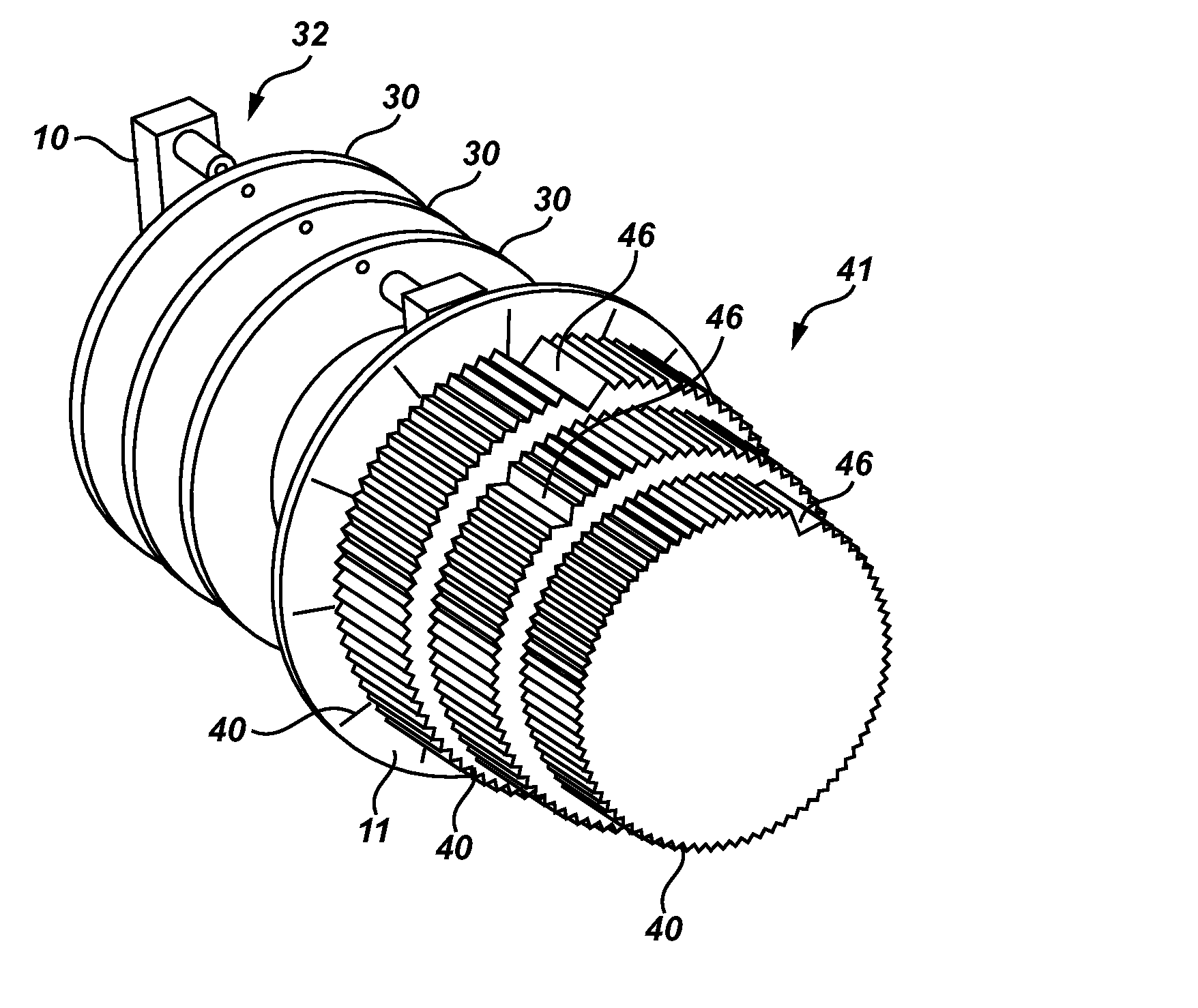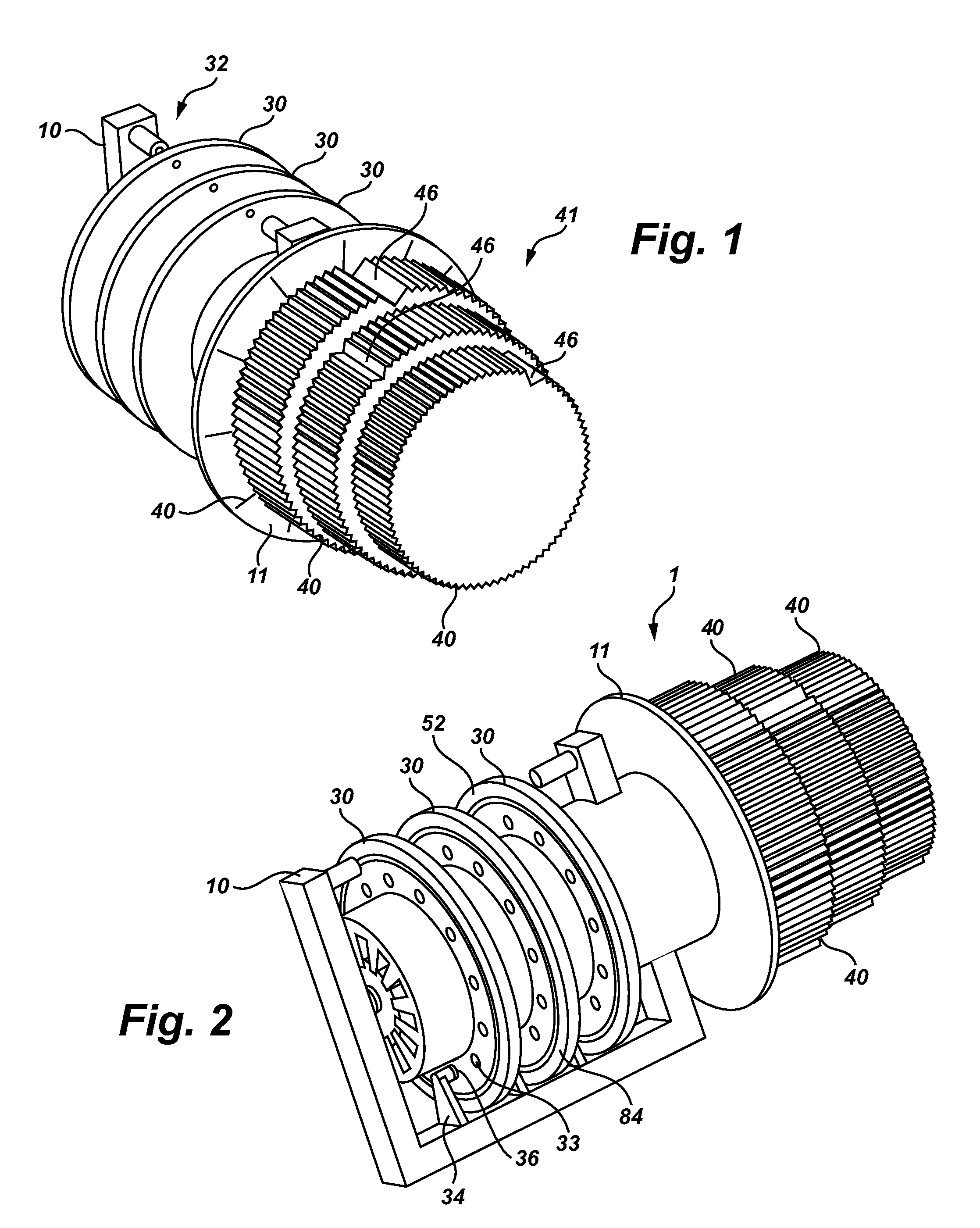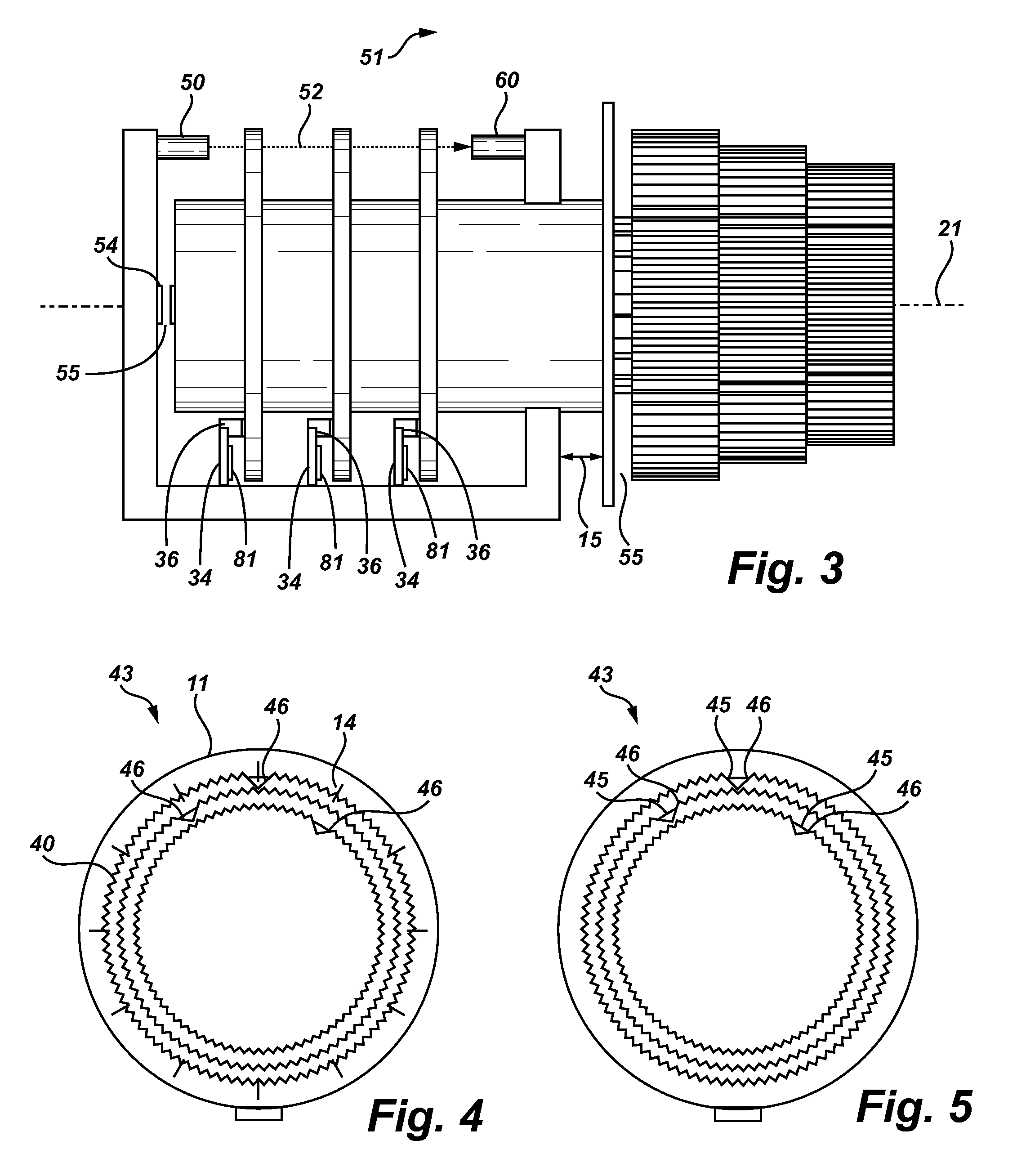Electromechanical non-numeric control for locks
- Summary
- Abstract
- Description
- Claims
- Application Information
AI Technical Summary
Benefits of technology
Problems solved by technology
Method used
Image
Examples
Embodiment Construction
[0036]The following is a brief description of function and a presentation of a featured novel concept. Referring to FIGS. 1 and 2, an electro-mechanical control 1 controls the opening of lock 2 (not shown). Lock 2 is a bolt or latch system which receives a signal from the electro-mechanical control 1 when preset parameters, otherwise known as a combination, are satisfied. Typically, these parameters are a set numbers dialed in a unique sequence. A novel feature of the present invention is to represent such a set of parameters in an easy to recognize and remember visual pattern. Such a pattern is shown in FIG. 1, where dials 40 display indicator notches 46 in particular angular orientations. Two embodiments of visual pattern 43 are shown in head-on views in FIGS. 4 and 5.
[0037]The pattern of the indicator notches 46 matches to an alignment of apertures 31 on wheels 30, which are connected to dials 40 by shafts 20 (FIG. 6). The alignment of apertures 31 permits light beam 52 (FIG. 3) ...
PUM
 Login to View More
Login to View More Abstract
Description
Claims
Application Information
 Login to View More
Login to View More - R&D
- Intellectual Property
- Life Sciences
- Materials
- Tech Scout
- Unparalleled Data Quality
- Higher Quality Content
- 60% Fewer Hallucinations
Browse by: Latest US Patents, China's latest patents, Technical Efficacy Thesaurus, Application Domain, Technology Topic, Popular Technical Reports.
© 2025 PatSnap. All rights reserved.Legal|Privacy policy|Modern Slavery Act Transparency Statement|Sitemap|About US| Contact US: help@patsnap.com



